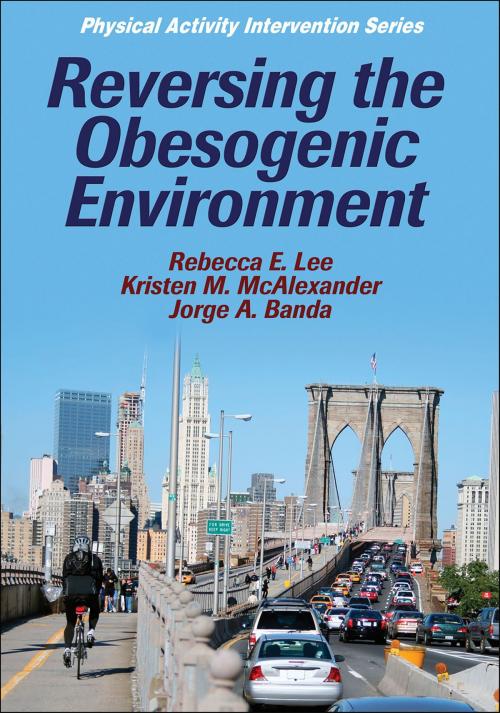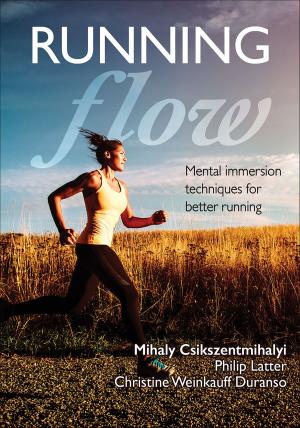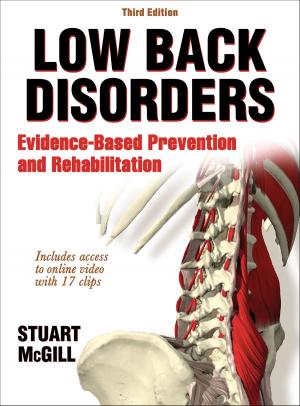Reversing the Obesogenic Enviroment
Nonfiction, Health & Well Being, Medical, Reference, Public Health| Author: | Rebecca E. Lee, Kristen McAlexander, Jorge A. Banda | ISBN: | 9781492582953 |
| Publisher: | Human Kinetics, Inc. | Publication: | March 2, 2011 |
| Imprint: | Human Kinetics, Inc. | Language: | English |
| Author: | Rebecca E. Lee, Kristen McAlexander, Jorge A. Banda |
| ISBN: | 9781492582953 |
| Publisher: | Human Kinetics, Inc. |
| Publication: | March 2, 2011 |
| Imprint: | Human Kinetics, Inc. |
| Language: | English |
Obesity has become a global crisis. Although most would agree that eating better and being more physically active are the answer to the problem, researchers have recently become aware that the problem goes beyond just changing individual behaviors. We can convince people of the benefits of healthful eating and regular physical activity, but what happens when they go home to a neighborhood where fresh vegetables are not available and opportunities for physical activity are hard to find? If the environment doesn’t help support healthy lifestyles, the change will be next to impossible to sustain. In Reversing the Obesogenic Environment, leading researchers Lee, McAlexander, and Banda introduce the concept of the obesogenic environment—an environment that leads people to become obese—and explore ways that changing our environment can encourage healthier choices.
Although most of the current literature focuses on the food supply and dietary habits, Reversing the Obesogenic**Environment takes a broader view of the current obesity problem. It looks at all of the elements that combine to create the obesogenic environment:
•The ways that the built environment, access to resources, and active transportation systems can either foster or discourage regular physical activity
•The multiple factors that encourage consumption of calorie-laden, nutritionally inadequate foods that can lead to obesity
•The positive and negative impact of public policy
•The influence of family, culture, socioeconomic status, and other social factors on an individual’s health behaviors as well as access to physical activity opportunities and healthier food options
•The role that media and marketing play in food purchasing decisions
With Reversing the Obesogenic Environment, readers will get a cutting-edge view of this emerging body of research with applications that can be realistically implemented in their communities. The book goes beyond defining the issues that contribute to the obesity epidemic—it offers tools that will help practitioners start to reverse it. Throughout the book, the authors incorporate practical recommendations based on the latest research. Sample programs and policies, checklists, and potential solutions offer readers a starting point for changes in their own communities.
The obesity epidemic is a multifaceted issue influenced by factors ranging from international trade and national policy to individual behaviors. Reversing the problem will take coordinated multilevel efforts. These efforts may take years to come to fruition, but it isn’t too late to take action. Reversing the Obesogenic Environment is the ideal guide to taking the first steps toward change.
Reversing the Obesogenic Environment is part of the Physical Activity Intervention Series (PAIS). This timely series provides educational resources for professionals interested in promoting and implementing physical activity and health promotion programs to a diverse and often-resistant population.
Obesity has become a global crisis. Although most would agree that eating better and being more physically active are the answer to the problem, researchers have recently become aware that the problem goes beyond just changing individual behaviors. We can convince people of the benefits of healthful eating and regular physical activity, but what happens when they go home to a neighborhood where fresh vegetables are not available and opportunities for physical activity are hard to find? If the environment doesn’t help support healthy lifestyles, the change will be next to impossible to sustain. In Reversing the Obesogenic Environment, leading researchers Lee, McAlexander, and Banda introduce the concept of the obesogenic environment—an environment that leads people to become obese—and explore ways that changing our environment can encourage healthier choices.
Although most of the current literature focuses on the food supply and dietary habits, Reversing the Obesogenic**Environment takes a broader view of the current obesity problem. It looks at all of the elements that combine to create the obesogenic environment:
•The ways that the built environment, access to resources, and active transportation systems can either foster or discourage regular physical activity
•The multiple factors that encourage consumption of calorie-laden, nutritionally inadequate foods that can lead to obesity
•The positive and negative impact of public policy
•The influence of family, culture, socioeconomic status, and other social factors on an individual’s health behaviors as well as access to physical activity opportunities and healthier food options
•The role that media and marketing play in food purchasing decisions
With Reversing the Obesogenic Environment, readers will get a cutting-edge view of this emerging body of research with applications that can be realistically implemented in their communities. The book goes beyond defining the issues that contribute to the obesity epidemic—it offers tools that will help practitioners start to reverse it. Throughout the book, the authors incorporate practical recommendations based on the latest research. Sample programs and policies, checklists, and potential solutions offer readers a starting point for changes in their own communities.
The obesity epidemic is a multifaceted issue influenced by factors ranging from international trade and national policy to individual behaviors. Reversing the problem will take coordinated multilevel efforts. These efforts may take years to come to fruition, but it isn’t too late to take action. Reversing the Obesogenic Environment is the ideal guide to taking the first steps toward change.
Reversing the Obesogenic Environment is part of the Physical Activity Intervention Series (PAIS). This timely series provides educational resources for professionals interested in promoting and implementing physical activity and health promotion programs to a diverse and often-resistant population.















